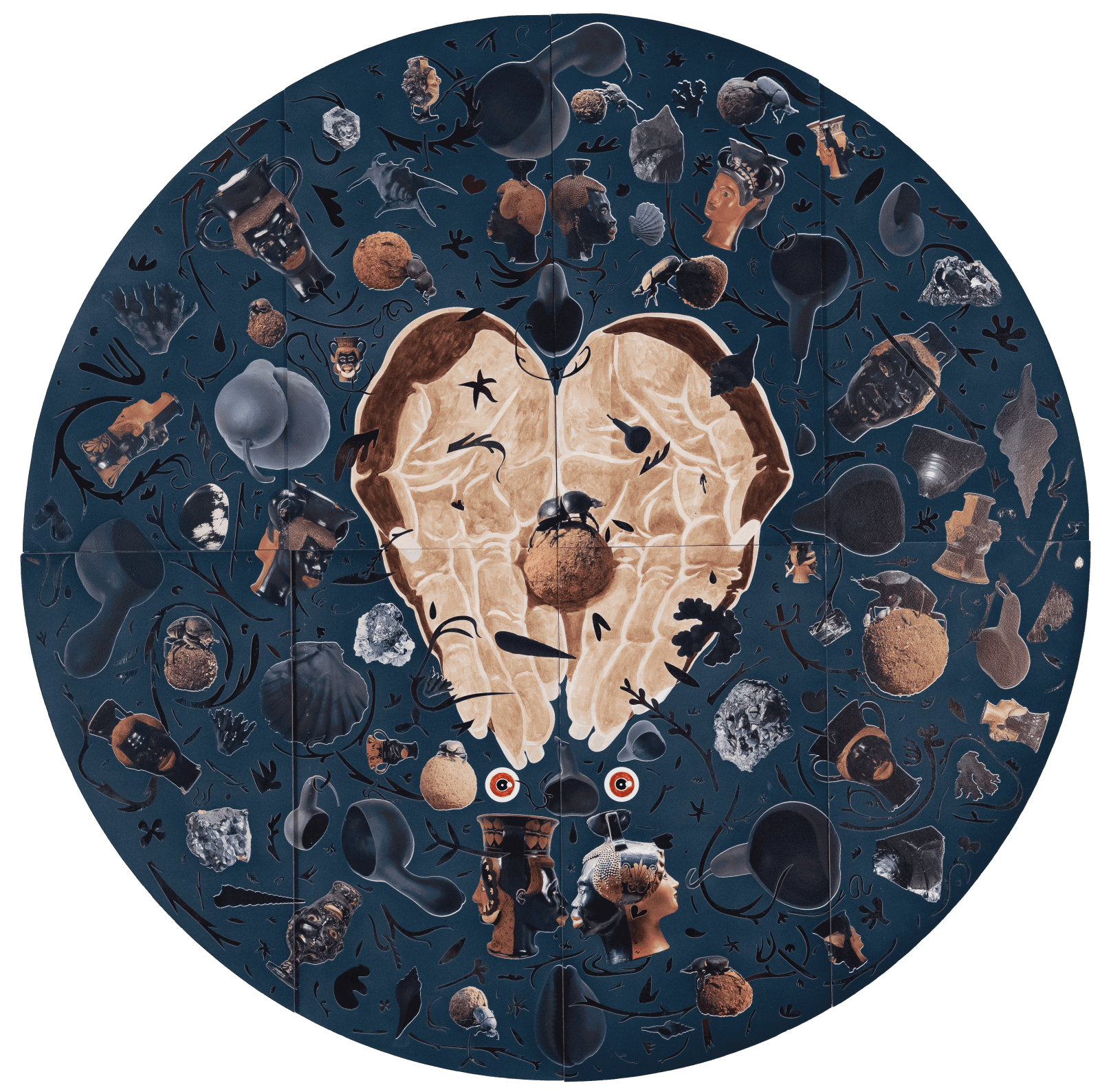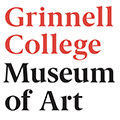
William Villalongo
In "Black Menagerie (Khepri & Janus)," Sasha Mae Eccleston’s cupped hands present the viewer with a Scarab. The insect, also known as a Dung Beetle, characteristically rolls its eggs into a ball of excrement burying the ball to insure a safe place for incubation. Three months later, the offspring emerge, ready to repeat the life cycle.
The Ancient Egyptians believed the answer to life’s greatest mysteries were embedded in the insignificant and unpredictable. The Scarab, a symbol of renewal, growth, and transformation, was believed to be a reincarnation of Khepri, the God of resurrection and creation. During a period of Mediterranean migration (1st millennium B.C.E.), the Scarab spread beyond Egypt and entered into Graeco-Roman religious practices.
Janus, the Roman God of beginnings, is generally depicted as having two faces, providing a view to both past and future at once. The Janiform vases found in Northern Italy notably depict the faces as one white and one Black. The appearance of both Scarabs and Janiform vases here suggests the cross-cultural exchange that occurred between Ancient Egypt and the larger Roman Empire.
During his residency, Villalongo visited numerous archeological collections where he discovered a surprising number of Janiform vases. While preserved, the vessels lacked documentation and research, making a case for the need for greater study in the area of Black history in Western antiquity.

